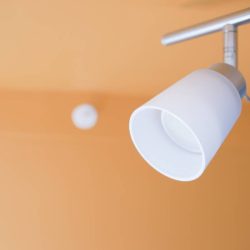Summer is a time for outdoor fun, but it also brings challenges for those with allergies and health concerns related to air quality. The combination of high temperatures, pollen, and increased pollution can lead to significant health impacts.
Understanding how to maintain good indoor air quality during heat waves and manage summer pollen allergies is crucial for staying healthy and comfortable. This article provides practical tips to help you breathe easier and enjoy the season, despite the challenges that summer air quality can present.
The Impact of Summer Heat on Air Quality
When discussing poor outdoor air quality, we often focus on extreme weather events like wildfires or pollution from transportation. However, other factors, such as seasonal changes in temperature and weather, also play a significant role.
Long summer days with plenty of sunshine and heat can lead to substantial increases in various types of air pollution.
Ground-Level Ozone Formation
Sunny summer days create ideal conditions for ground-level ozone, the main component of smog. Ozone is a harmful pollutant that can cause respiratory problems, such as coughing, difficulty breathing, and aggravated asthma, even at low exposure levels. It forms when nitrogen oxides and volatile organic compounds (VOCs) from vehicle exhaust, industrial emissions, and other sources react in the presence of sunlight and heat. Unhealthy ozone levels are most common on hot, sunny days, particularly in areas with heavy traffic or industrial activity.
Increased Particulate Matter (PM)
Particulate matter consists of tiny particles that can float in the air. When inhaled, the smallest particles can penetrate deep into the lungs and even enter the bloodstream, leading to potential respiratory and cardiovascular health issues.
Several factors contribute to worsened particle pollution in summer:
- Heat waves and droughts: These conditions dry out the soil, increasing the likelihood of wildfires and dust storms, which elevate particle pollution levels.
- Pollen: Grasses that flower in summer release pollen, adding to particle pollution.
- Increased transportation emissions: Summer travel increases vehicle emissions.
- Mould growth: Hot, humid climates promote the health impacts of poor summer air quality growth, which contributes to particle pollution.
Stagnant Air Days
While a breeze can cool you down on a hot summer day, it also plays a crucial role in improving outdoor air quality. Winds keep the air moving, preventing pollutants like dust, smoke, and smog from accumulating. However, hot, dry summer weather often leads to more stagnant air days, a trend likely to continue with rising temperatures. Without wind to circulate the air, pollution becomes trapped and can quickly reach unhealthy levels.

Health Impacts of Poor Summer Air Quality
When the summer sun shines bright and the temperatures soar, it’s a perfect time for beach trips, barbecues, and outdoor activities. However, the same weather that makes summer fun can also lead to poor air quality, which poses serious health risks. Understanding these impacts can help us take better precautions to protect our health during the hotter months.
Ground-Level Ozone and Respiratory Health
One of the main contributors to poor summer air quality is ground-level ozone. This harmful pollutant is formed when nitrogen oxides (NOx) and volatile organic compounds (VOCs) react in the presence of sunlight and heat. These pollutants mainly come from vehicle exhaust, industrial emissions, and chemical solvents.
High levels of ground-level ozone can cause a range of respiratory issues. Common symptoms include:
- Coughing and throat irritation: Breathing in ozone can make you feel like you have a sore throat or cause you to cough frequently.
- Shortness of breath: Even at low levels, ozone can make it harder to breathe deeply and comfortably.
- Worsened asthma symptoms: Ozone can trigger asthma attacks and make it more difficult for asthma sufferers to manage their condition.
- Increased susceptibility to respiratory infections: Long-term exposure can weaken the respiratory system, making it easier for viruses and bacteria to cause infections.
Particulate Matter (PM) and Cardiovascular Health
Particulate matter (PM) is another significant air pollutant that becomes more problematic during the summer. PM consists of tiny particles that can be inhaled deep into the lungs and even enter the bloodstream. Sources of PM include wildfires, dust storms, pollen, mould, and vehicle emissions.
The health effects of PM are far-reaching and include:
- Respiratory problems: Similar to ozone, PM can cause coughing, difficulty breathing, and exacerbation of asthma and bronchitis.
- Cardiovascular issues: PM can enter the bloodstream and contribute to heart problems, including heart attacks and strokes. People with pre-existing heart conditions are particularly at risk.
- Premature death: Long-term exposure to high levels of PM can lead to serious health problems that increase the risk of premature death.
Vulnerable Populations
Certain groups are more vulnerable to the health impacts of poor summer air quality, including:
- Children: Their developing lungs are more susceptible to damage from pollutants.
- Elderly individuals: Aging bodies often have weakened respiratory and cardiovascular systems.
- People with pre-existing health conditions: Those with asthma, chronic obstructive pulmonary disease (COPD), heart disease, or diabetes are at greater risk.
- Outdoor workers and athletes: People who spend a lot of time outdoors are more likely to inhale larger quantities of pollutants.

How to Maintain Good Indoor Air Quality During a Heat Wave
Heat waves can be challenging, not just because of the high temperatures but also due to their impact on indoor air quality. During these periods, pollutants can accumulate indoors, leading to health issues. Here are some practical tips to help you maintain good indoor air quality during a heat wave:
1. Keep Windows and Doors Closed
To prevent outdoor pollutants from entering your home:
- Close windows and doors: This is especially important during the hottest parts of the day when air pollution levels are often highest.
- Use weather stripping: Seal gaps around windows and doors to minimize the entry of outdoor air.
2. Use Air Conditioning Wisely
Air conditioning can help improve indoor air quality by filtering out pollutants:
- Maintain your AC unit: Regularly clean or replace filters to ensure they effectively remove dust, pollen, and other particles.
- Set to recirculate mode: This minimizes the intake of outdoor air, reducing the amount of pollutants entering your home.
3. Invest in Air Purifiers
Air purifiers with HEPA filters can significantly improve indoor air quality:
- Place purifiers in key areas: Focus on rooms where you spend the most time, such as bedrooms and living rooms.
- Ensure regular maintenance: Clean or replace filters as recommended by the manufacturer to keep the purifier working efficiently.
4. Avoid Indoor Pollutants
During a heat wave, it’s crucial to minimize activities that can contribute to indoor pollution:
- Limit the use of chemical cleaners: Opt for natural or non-toxic cleaning products.
- Avoid smoking indoors: Cigarette smoke can significantly degrade indoor air quality.
- Minimize the use of candles and incense: These can release particulate matter and other pollutants into the air.
5. Control Humidity Levels
High humidity can promote mould growth and dust mites, which can affect air quality:
- Use a dehumidifier: Maintain indoor humidity levels between 30-50% to prevent mould and mildew.
- Fix leaks promptly: Address any plumbing leaks or water damage quickly to avoid moisture buildup.
6. Ventilate When Safe
While keeping windows and doors closed is generally advisable, there are times when ventilation is necessary:
- Ventilate during cooler, less polluted times: Early morning or late evening can be better times to briefly open windows for fresh air.
- Use exhaust fans: In bathrooms and kitchens, use exhaust fans to remove humidity and odours.
7. Clean Regularly
Regular cleaning helps reduce dust, pet dander, and other pollutants:
- Vacuum with a HEPA filter: This can effectively capture fine particles that standard vacuums might miss.
- Dust with damp cloths: Using a damp cloth prevents dust from becoming airborne.
8. Monitor Indoor Air Quality
Using an indoor air quality monitor can help you stay informed about the air in your home:
- Identify problem areas: Use the data to pinpoint rooms with poor air quality and take corrective action.
- Track improvements: Monitor the effectiveness of your air quality improvement efforts.
9. Stay Hydrated and Healthy
Maintaining good health can help mitigate some of the effects of poor air quality:
- Drink plenty of water: Staying hydrated helps your body cope with heat and pollutants.
- Maintain a healthy diet: A nutritious diet supports your overall health and resilience.

Managing Summer Pollen Allergies
At the beginning of summer, grasses start to flower and release pollen into the air. If you have summer pollen allergies, spending time outdoors can trigger symptoms like itchy, watery eyes, sneezing, and a runny nose. Since it’s not practical or enjoyable to spend the entire summer indoors, here are some tips to reduce seasonal allergy symptoms:
Stay Informed
- Check pollen levels: Pollen levels can change throughout the summer, so stay updated on local air quality forecasts. Use tools like the National Allergy Bureau and Airnow.gov to monitor pollen counts, ground-level ozone, and particle pollution in your area.
Limit Outdoor Time
- Plan wisely: Schedule outdoor activities, especially exercise or strenuous work, on days with good air quality. This reduces your exposure to pollen and other outdoor pollutants.
Avoid Bringing Pollen Indoors
- Change clothes and shower: After spending time outside, pollen can settle on your skin, hair, clothes, and shoes. To keep indoor allergen levels low, shower and change into fresh clothes as soon as you come inside. Don’t forget to wipe down your pet’s feet and coat after they play outside.
Use Anti-Allergy Bedding
- Hypoallergenic covers: Use hypoallergenic mattress covers and bedding to keep pollen, dust mites, and other allergens from building up in your bed. These covers are made of tightly woven fabric that forms a barrier between airborne pollutants and your pillows or mattress. This way, allergens stay on the surface and can be easily cleaned away in the washing machine.
Clean Regularly
- Reduce dust: Household dust contains many allergens, including pollen, dust mites, and mould spores. Vacuum, mop, and dust your home regularly to keep indoor allergy triggers to a minimum.
With these handy tips, you can make the most of your summer and manage allergy symptoms effectively. Keep up-to-date, schedule your outdoor fun for days when the air quality is at its best, stop pollen at the door, opt for hypoallergenic bedding, and maintain a regular cleaning routine to ensure your home is a cosy haven.















